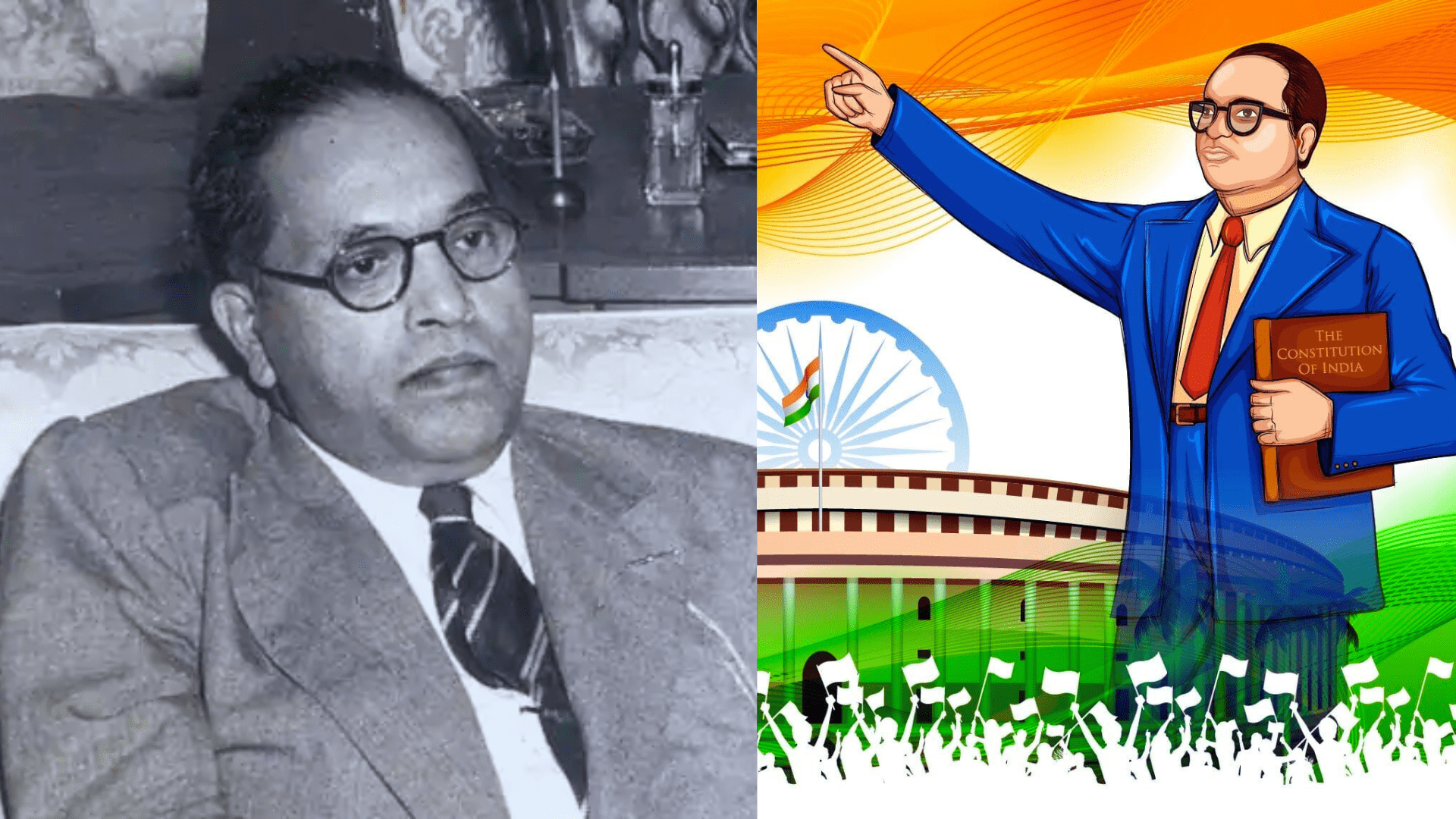The Indian Constitution stands as a monumental document, embodying the aspirations and values of a diverse nation. At its helm was a visionary leader, Dr. B.R. Ambedkar, whose remarkable journey and pivotal role in the drafting process make him the indisputable father of the Indian Constitution.
Early Life of Dr. B.R. Ambedkar
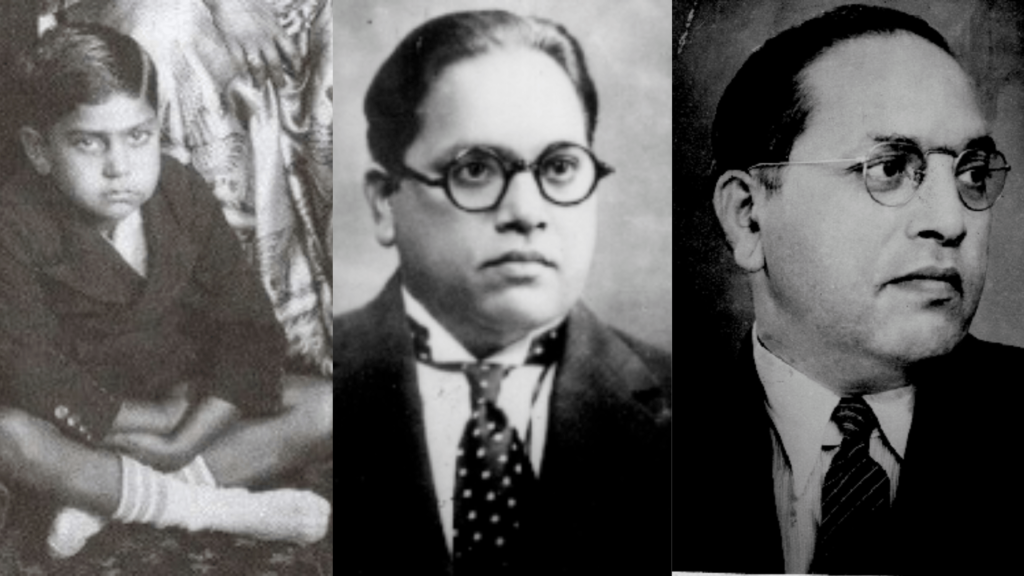
Dr. B.R. Ambedkar, born on April 14, 1891, in Mhow (now Dr. Ambedkar Nagar), Madhya Pradesh, faced early challenges due to his Dalit Mahar background. His high-caste schoolmates subjected him to humiliation, reflecting the prevalent social discrimination of the time. Despite these obstacles, Ambedkar’s determination led him to academic success, earning degrees and setting the stage for his future contributions.
Role in the Constituent Assembly
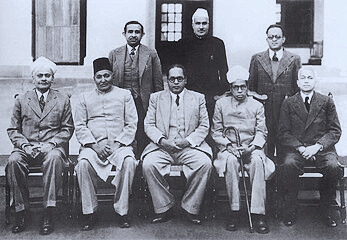
Dr. B.R. Ambedkar played a pivotal role in the Constituent Assembly as the Chairman of the Drafting Committee, a position that held immense significance in the formation of the Constitution of India. In this capacity, he led the drafting process and intervened in nearly every debate, shaping the constitutional framework of the nation.
Influences on the Constitution
The Indian Constitution is a result of diverse influences, combining various philosophical, legal, and international perspectives. Some notable influences include:
- American Influence: The principles of the United States Constitution, particularly regarding equal protection, have left a mark on the Indian Constitution, emphasizing democratic values.
- Borrowed Features: India borrowed features from other constitutions:
- Australia: Concurrent list
- Canada: Federation with a strong Centre
- Ireland: Directive principles.
3. Philosophical Influences: The Indian Constitution’s fabric is woven with diverse philosophical ideas, reflecting the cultural and social intricacies of India.
Key Features of the Indian Constitution
The Indian Constitution, a comprehensive legal document, exhibits several key features:
- Lengthiest Written Constitution: The Indian Constitution is one of the longest written constitutions globally, encompassing detailed provisions and amendments.
- Drawn from Various Sources: It amalgamates principles from different legal systems and documents worldwide, ensuring a well-rounded legal framework.
- The blend of Rigidity and Flexibility: The Constitution combines rigid aspects, such as the amendment process, with flexible elements to adapt to changing circumstances.
- Federal System with Unitary Bias: While India follows a federal structure, there is a unitary bias during emergencies, providing a balance between centralization and decentralization of power.
- Sovereign, Socialist, Secular, and Democratic Republic: These are the foundational principles declared in the preamble, guiding the essence of the Indian state.
- Directive Principles: The Constitution includes directive principles aimed at achieving social and economic justice, reflecting a commitment to the welfare state.
Challenges Faced During Drafting
The leaders of India faced several challenges during the drafting of the Constitution, reflecting the complex and diverse nature of the country:
- Diversity and Size of the Nation: India’s vast size and diverse population posed challenges in ensuring representation and addressing regional disparities.
- Partition and Communal Tensions: The aftermath of partition in 1947 led to communal tensions, impacting the drafting process and necessitating the handling of sensitive issues related to religious communities.
- Nation Building: The task of nation-building was crucial, requiring the establishment of a cohesive identity and integration of princely states into a unified nation.
- Economic Development: The Constituent Assembly had to consider economic policies that would foster development and address socio-economic inequalities.
- Equality: Ensuring equality for all citizens, regardless of caste, creed, or gender, was a significant challenge, particularly given the historical social hierarchies in India.
- Multiple Roles of the Constituent Assembly: The Constituent Assembly had the challenging responsibility of acting as a legislature, a constituent body, and a drafting committee, necessitating multitasking and efficient decision-making.
Historical Context of Constitution Making
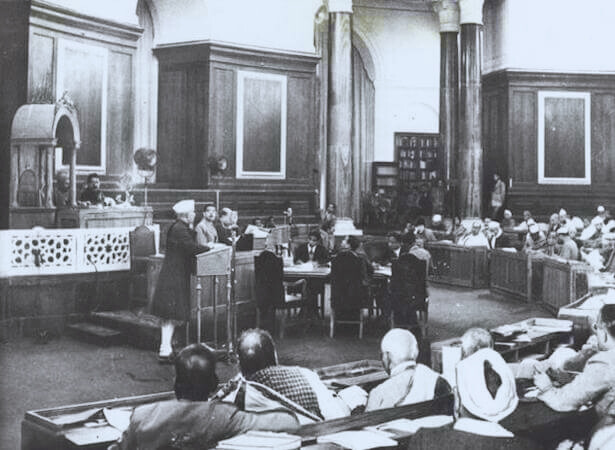
The historical context of constitution-making in India is deeply rooted in the country’s struggle for independence from British rule. The Indian Independence Act of 1947 laid the groundwork for the creation of two independent nations, India and Pakistan. Following independence, the need for a constitution became evident.
India’s constitutional history also draws from key legislative acts during British rule, such as the Government of India Acts of 1919 and 1935. The adoption of a new constitution was imperative to replace the Government of India Act 1935 as the fundamental governing document.
The Constituent Assembly constituted in 1946, played a pivotal role in framing the Constitution of India. Led by Dr. B.R. Ambedkar, the assembly comprised representatives from various communities and regions. The Constitution, adopted on January 26, 1950, established India as a sovereign, socialist, secular, and democratic republic.
Significance of Dr. Ambedkar’s Leadership
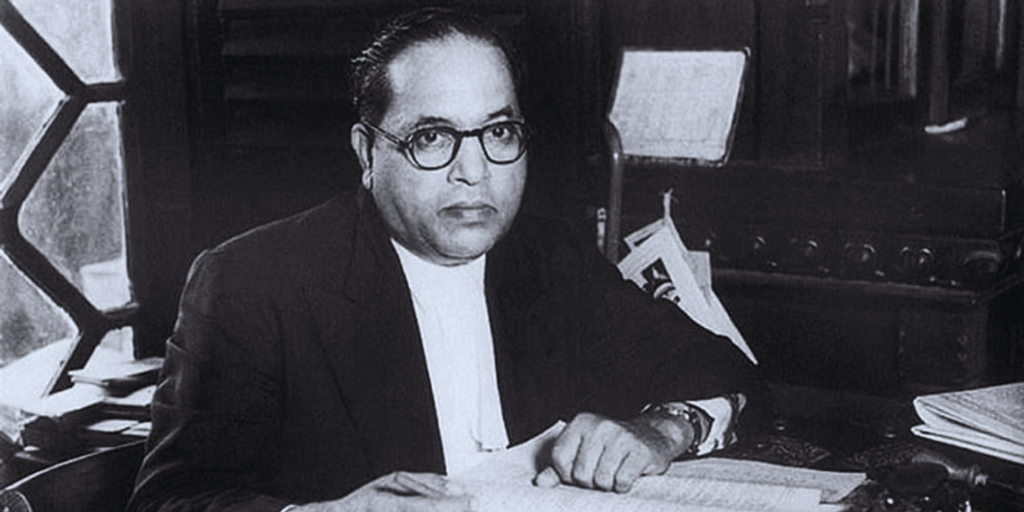
Dr. B.R. Ambedkar’s leadership holds immense significance for several reasons:
- Architect of the Indian Constitution: Dr. Ambedkar played a pivotal role in drafting the Constitution of India. As the Chairman of the Constituent Assembly’s Drafting Committee, he contributed significantly to shaping the fundamental law of the country.
- Social Reformer: A champion of social justice, Dr. Ambedkar dedicated his life to eradicating caste-based discrimination and untouchability. His efforts led to the inclusion of provisions in the Constitution to uplift marginalized communities.
- Education Advocate: Dr. Ambedkar emphasized education as a tool for empowerment. He believed in the transformative power of education to break the shackles of social inequality.
- Political Visionary: Beyond his role in framing the Constitution, Ambedkar was a visionary political leader. He served as India’s first Law Minister and principal architect of the Constitution.
- Global Impact: Dr. Ambedkar’s ideas on social justice, equality, and human rights have reverberated globally. He continues to inspire movements for justice and equality worldwide.
Controversies Surrounding the Indian Constitution
The making of the Indian Constitution was not without controversies, reflecting diverse challenges and ideological differences:
- Ideological Differences: The Constituent Assembly faced debates and conflicts stemming from varying ideologies, reflecting the diverse political spectrum of its members.
- Regional and Linguistic Diversity: India’s vast regional and linguistic diversity led to debates on issues like federalism and language policy. Resolving these challenges required careful consideration to ensure representation and equal rights for all regions and linguistic groups.
- Caste and Communal Divisions: The Constituent Assembly grappled with addressing issues related to caste and communal divisions. Framing provisions for affirmative action and minority rights aimed to address historical injustices and ensure social harmony.
- Fundamental Rights Conflicts: Ensuring a balance among various fundamental rights, including civil, political, socio-economic, and group rights, presented challenges. Resolving conflicts among these rights required a nuanced approach.
- Official Naming Controversy: Recent controversies include debates over referring to India as “Bharat” in official contexts, reflecting tensions between modern and traditional nomenclature.
- Constitutional Amendments: Certain constitutional amendments, like the controversial Constitution (Forty-second Amendment) Act, of 1976, raised concerns about restricting judicial power, emphasizing the dynamic nature of constitutional controversies.
- Freedom of Religion Laws: Controversies surrounding anti-conversion laws and their impact on freedom of religion have also emerged, reflecting the ongoing challenges related to individual rights and state intervention.
Post-Adoption Contributions of B. R. Ambedkar
Bhimrao Ramji Ambedkar, the principal architect of the Indian Constitution, made significant contributions post its adoption:
- Law Minister and Constitution Implementation: After India gained independence, Ambedkar was appointed as the country’s first Law Minister and played a pivotal role in implementing the new Constitution.
- Dalit Empowerment: Ambedkar dedicated himself to the upliftment of the Dalit community. He advocated for their rights and worked towards eradicating social discrimination.
- Drafting Hindu Code Bill: Ambedkar took the lead in drafting the Hindu Code Bill, seeking to reform and codify Hindu personal laws to address issues of gender inequality and caste-based discrimination.
- Promotion of Buddhism: He renounced Hinduism and embraced Buddhism, encouraging millions to follow suit. His efforts aimed to provide social and spiritual emancipation to the marginalized.
- Economic Thoughts: Ambedkar made significant contributions to economic thought, emphasizing social justice and advocating for policies that would uplift the socio-economically disadvantaged.
- Global Legacy: B. R. Ambedkar’s legacy extends globally. His ideas on social justice, human rights, and democracy continue to inspire movements and scholars worldwide.
Comparative Analysis with Other Constitutions
A comparative analysis of the Indian Constitution with other constitutions reveals several key features and distinctions:
1. Nature of Constitution:
- India: The Indian Constitution is written and drawn from various sources, including the British, American, and Irish constitutions.
- France: France also has a written constitution but has experienced modifications due to political instability.
2. Flexibility vs. Rigidity:
- India: The Indian Constitution is a blend of flexibility and rigidity, allowing amendments through a defined process.
- USA: The U.S. Constitution is relatively rigid, requiring a complex amendment process.
3. Executive Supremacy:
- India: The Indian Constitution does not follow the principle of executive supremacy.
- France: The French constitution is based on the principle of executive supremacy.
4. Constitutional Influences:
- India: The Indian Constitution is influenced by the U.S. Constitution, borrowing concepts like fundamental rights.
- USA: The U.S. Constitution is a significant influence on various aspects of the Indian Constitution.
5. Amendment Procedure:
- India: Amendments to the Indian Constitution require a special majority in Parliament.
- France: The French Constitution can be amended through a straightforward process.
6. Comparative Constitutions:
A comparative analysis of the constitutions of the UK, USA, Russia, and Japan highlights diverse constitutional structures.
Public Perception and Celebrations of Constitution Day in India
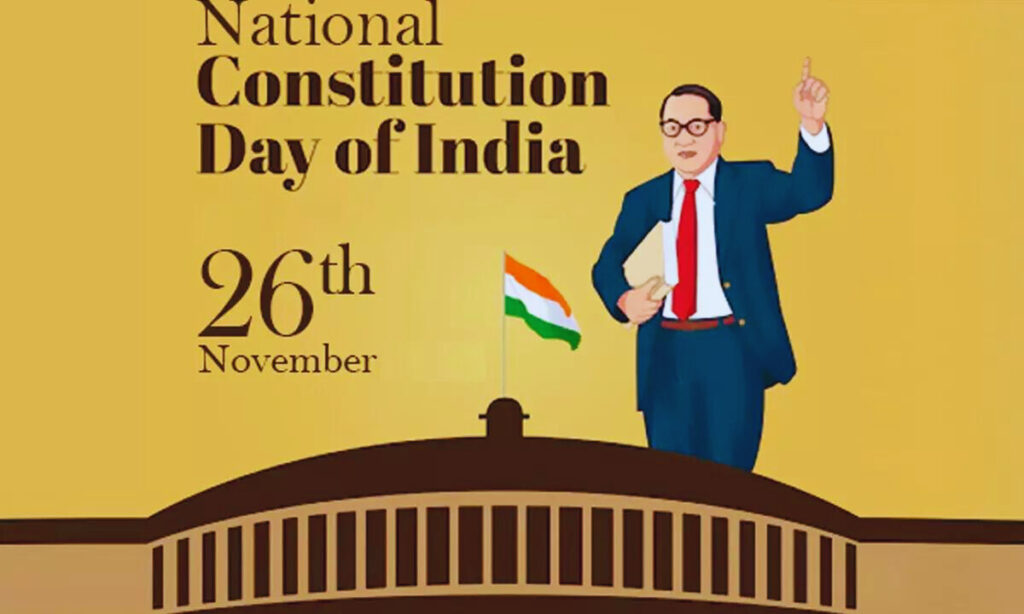
Constitution Day in India, celebrated on November 26th, marks the adoption of the Indian Constitution by the Constituent Assembly. The occasion is significant, and public perception is generally positive, viewing it as a landmark day in the nation’s history. Here are key points related to public perception and celebrations:
1. Historical Significance:
Constitution Day holds historical significance as it symbolizes the culmination of efforts by the Constituent Assembly in drafting and adopting the Constitution.
2. Public Celebrations:
The day is celebrated with various events, discussions, and educational programs across the country to create awareness about the Constitution’s principles and values.
3. Government Initiatives:
The government often organizes official events, seminars, and discussions involving dignitaries, legal experts, and students to commemorate the day.
4. Educational Institutions:
Schools and colleges actively participate, organizing special assemblies, debates, and lectures on the importance of the Constitution.
6. Media Coverage:
Media plays a crucial role in highlighting the significance of Constitution Day, with articles, discussions, and interviews emphasizing the values enshrined in the Constitution.
7. Public Awareness:
Efforts are made to enhance public awareness about fundamental rights, duties, and the role of citizens in upholding constitutional principles.
Educational Initiatives and Awareness in India
India has undertaken several educational initiatives to enhance awareness and improve the overall education sector. Key measures include:
1. National Education Policy (NEP) 2020:
The NEP 2020 is a comprehensive framework addressing education from elementary to higher and vocational training. It emphasizes foundational literacy and aims to universalize pre-primary education.
2. Government Initiatives:
Various government initiatives, such as webinars, quizzes, competitions, exhibitions, and more, have been introduced to create awareness and engagement in the education sector.
3. Challenges and Solutions:
Efforts are being made to address challenges in school education, with a focus on improving quality, access, and inclusivity. Solutions involve comprehensive measures to enhance the education system.
Influence of India’s Constitution on Subsequent Leaders
India’s constitution, adopted on January 26, 1950, holds significant influence on subsequent leaders and political developments. Several aspects contribute to its lasting impact:
1. Global Constitutional History:
The framing of India’s constitution is considered a critical event in the global history of constitution-making and democracy, making it a reference for subsequent constitutional developments worldwide.
2. Democratic Values:
India’s constitution established the country as the most populous democracy globally. It reflects democratic principles, universal suffrage, and guarantees of rights, influencing subsequent leaders to uphold democratic norms.
3. Anti-Caste Discrimination:
India’s constitution explicitly banned caste discrimination, and subsequent leaders have engaged with this legacy to address social issues and promote fairness.
4. Political Constitution:
The political constitution of India, with its provisions on government functioning and political influence, has shaped the approaches of political leaders and parties.
Conclusion
In conclusion, Dr. B.R. Ambedkar’s role as the father of the Indian Constitution is etched indelibly in the annals of history. His vision, leadership, and unwavering commitment to justice have bequeathed to India a constitution that continues to guide and inspire.
Read also: Who is Elle King’s Father?
Frequently Asked Questions (FAQs)
Q: Was Dr. B.R. Ambedkar the only key figure in the drafting of the Indian Constitution?
While Dr. Ambedkar played a pivotal role, the drafting committee comprised several eminent personalities, each contributing to the final document.
Q: How did Dr. Ambedkar’s early life shape his perspective on social issues?
Dr. Ambedkar’s experiences of caste discrimination fueled his commitment to eradicating social inequalities, shaping his perspective on justice and equality.
Q: Are there controversies surrounding specific provisions of the Indian Constitution?
Yes, certain provisions have faced criticism. Dr. Ambedkar, in his defense, provided insightful rationale, contributing to the robustness of the Constitution.
Q: What is the significance of Fundamental Rights in the Indian Constitution?
Fundamental Rights safeguard individual liberties, reflecting Dr. Ambedkar’s vision of a democratic and just society.
Q: How can the public contribute to promoting constitutional literacy?
Engaging in educational initiatives, participating in discussions, and staying informed about constitutional matters are ways the public can contribute to constitutional literacy.
